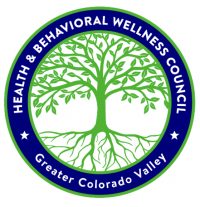The Reality, The Risk Factors
by Mazie Leftwich, PsyD, LCSW Emeritus
Suicide is a desperate solution for overwhelming emotions and conditions experienced by an individual who has lost all hope. Suicide becomes the best answer for all their pain and the problems they are facing. And suicide’s horrific aftermath for the family and friends is forever life-changing, always leaving indelible and traumatic memories and unanswered questions that live on throughout the lives of the survivors.
During the month of September, set aside as National Suicide Prevention Awareness Month, the Behavioral Health Task Force of Greater Colorado Valley has implemented a variety of actions and activities to help the community to focus on this national tragedy and ways to prevent suicide from reoccurring in our communities.
A FEW FACTS ABOUT SUICIDE
- Suicide is the 2nd leading cause of deaths for 10 to 34 year-olds.
- Suicide is the 4th leading cause of death among individuals ages of 35 and 44.
- 754,000 adults in Texas have had serious thoughts of suicide in the past year.
Suicide is very complicated and involves a multitude of risk factors. Too often suicide is over-simplified; but be aware that it is not simply the result of stress or difficult life circumstances. Many, many people who die by suicide have a mental health condition, often not diagnosed or even visible to family and friends.
The behavioral health disorders most closely linked to suicide risk include Major Depressive Disorder, Bipolar Disorder, Generalized Anxiety Disorder, Conduct Disorder, Eating Disorders, and Substance Abuse (alcohol, prescriptions and street drugs).
- Access to lethal means, especially in the home, can allow an individual to develop plans more specifically – hunting knives, prescription drugs, automobiles, guns, etc. This is true for both teens and adults.
There have been suicides in our community, both by teens and by adults. Generally speaking, many of these individuals didn’t look suicidal or even depressed; that’s what is so difficult to understand. And it makes it very difficult to intervene when you are not really aware what is going on inside someone. But at least part of the answer is for all of us to be aware that it can happen – and happen to people we know and love.
So, we all need to be aware and pay attention, open up communication with others, and LISTEN. Sometimes it is just the smallest of signs, but we need to be watchful and ask others how they are doing, is something bothering them, will they talk to us or to someone else, and give them hope. - Changes in brain chemistry, even in the absence of identifiable or obvious “triggers” and/or inherited predispositions are often at the root of these diagnosable disorders, although in some cases negative emotional conditions may be precipitated by environmental and traumatic stressors, including unresolved trauma that can go all the way back to early childhood.
KEY RISK FACTORS BEYOND THE ABOVE MENTIONED INCLUDE:
- Personality characteristics and attitude, such as hopelessness, low self-esteem, impulsivity, risk-taking, and poor problem-solving or coping skills.
- Family characteristics, such as significant family dysfunction, family history of suicidal behavior or mental health problems, death of a close family member, friend or loved one, and ongoing problems in the relationships between children and parents.
- Childhood abuse, neglect, or trauma, even to a now successful adult, can increase the risk of suicide.
- Stressful life circumstances, such as physical, sexual, and/or psychological abuse; breaking up of a romantic relationship; school problems and/or failure; lose of one’s job; bullying by peers; isolation; death of a friend; trouble with the law; and suicide of a peer or family member must be considered.
